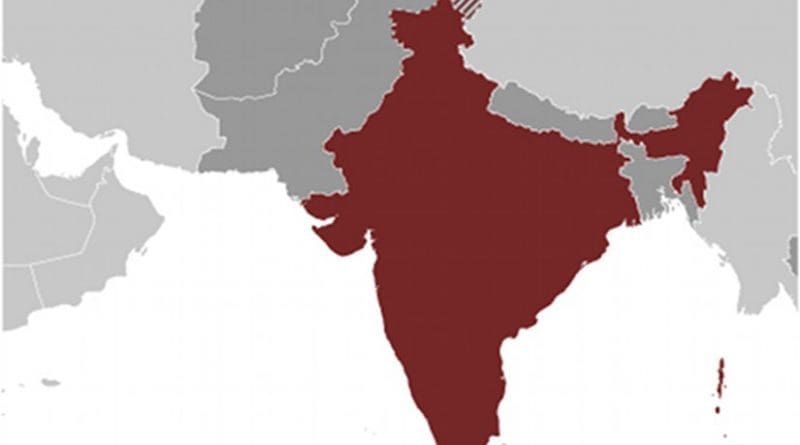‘Clean India Campaign’: Need To Move From Slogans To Achievements – Analysis
By N. S. Venkatraman*
Indian Prime Minister’s much publicized ‘Clean India Campaign’ has been widely welcomed in the country, however, many Indians think that this programme is yet to make significant impact at the ground level.
Now, the government of India has announced that 50 towns in India would be made 100% clean by March 2017. The programme target includes open defecation free conditions through construction of individual and public and community toilets; house-to-house collection of garbage and 100% processing of the same through solid waste management plan besides spot penalty for littering.
Viewing the progress during the last eighteen months, one cannot be blamed if she/he would think that such target to clean 50 cities 100% by March 2017 is rather very ambitious and would doubt whether it would be achieved at all.
Such doubts and misgivings arise since the Clean India programme so far has laid stress largely on collection of waste material and not so much on profitable utilization of waste material or treatment and disposal of waste material in an eco friendly manner. It appears that India is yet to realize that waste is potential source of profit.
Obviously, massive research and development efforts have to be initiated in the country for utilization of waste material, in a manner appropriate to the prevailing condition in India. Whatever such efforts initiated so far are yet to achieve any significant results that one can see on the ground and in public places.
According to a World Bank report, urban India generated around 1,09,589 metric ton of municipal solid waste per day in 2015 and this will increase to 3,76,639 metric ton per day in 2025. In Mumbai, two of three municipal dumps had to be shut down, since they were loaded with over capacity and a third in Deonar may run out of space in 2016.
According to the Central Pollution Control Board, the amount of plastic waste generated across 60 Indian cities in India is around 15,342 metric ton per day. Associated Chambers of Commerce of India (Assocham) estimates that in just two years, India’s electronic waste generation will rise by a third to touch 3 million metric ton by 2018, up from about 1.8 million metric ton currently.
Only 2.5 percent of India’s e-waste gets recycled. Over 95 percent of e-waste generated is managed by the unorganised sector and scrap dealers. Most of the e-waste is handled in the most unscientific way by scrap dealers, who may be inadvertently handling radioactive material.
New technologies that are appropriate to Indian conditions are needed for reliable extraction, separation and transformation of chemicals and other valuable materials from municipal solid waste and bio wastes. There are several exciting possibilities which can make the clean India progamme technically and economically viable.
For example, a pilot plant operates in Canada which converts municipal solid waste (MSW) into methanol. The plant has capacity to produce 38 million litres of methanol per annum.
India should certainly look into the feasibility of producing methanol from waste. This is a great project opportunity, as India imports more than 1.5 million metric tonne of methanol per annum and India faces shortage of natural gas, which can be the feedstock for methanol.
There are possibilities of producing several other chemicals and value added products like synthesis gas /ammonia gas from municipal solid waste apart from power generation.
Lot of work has taken place in developed countries generating chemicals and polymers from carbon dioxide. In spite of India being a huge generator of carbon dioxide gas, projects for production of value added chemicals from carbon dioxide have not yet been planned and implemented in India. There are so many other options and opportunities for profitable utilization of wastes that need to be looked into and exploited.
While the Indian Prime Minister’s initiatives are certainly laudable and his sincerity to achieve clean India is beyond doubt, the sad part is that common man is yet to be adequately involved in his day-to-day life in the clean India campaign.
In India, waste treatment projects have mainly been implemented by legal necessity. Now, Indian public and project promoters should modify their way of thinking so that they would be able to regard waste disposal sites and purification plants as sources of raw materials and energy, which should be converted to profit centres. People need to see achievements.
While the campaign of the government has to continue, meaningful technology initiatives have to be developed and implemented so that Clean India programme would not merely mean shifting the waste to dump yards where the dumped wastes cause even more ecological harm.
The stress has to be on converting the waste into wealth for which innovative designs and technologies are needed. It is evident that the Government of India is yet to achieve tangible results on this front.
While the Government of India has announced ambitious targets and is collecting huge tax by levying cess to fund the Clean India programme, people would like to hear more about achievements than about targets.
*N.S.Venkataraman is a Trustee of Nandini: Voice for the Deprived, Chennai. He can be reached at: [email protected]

